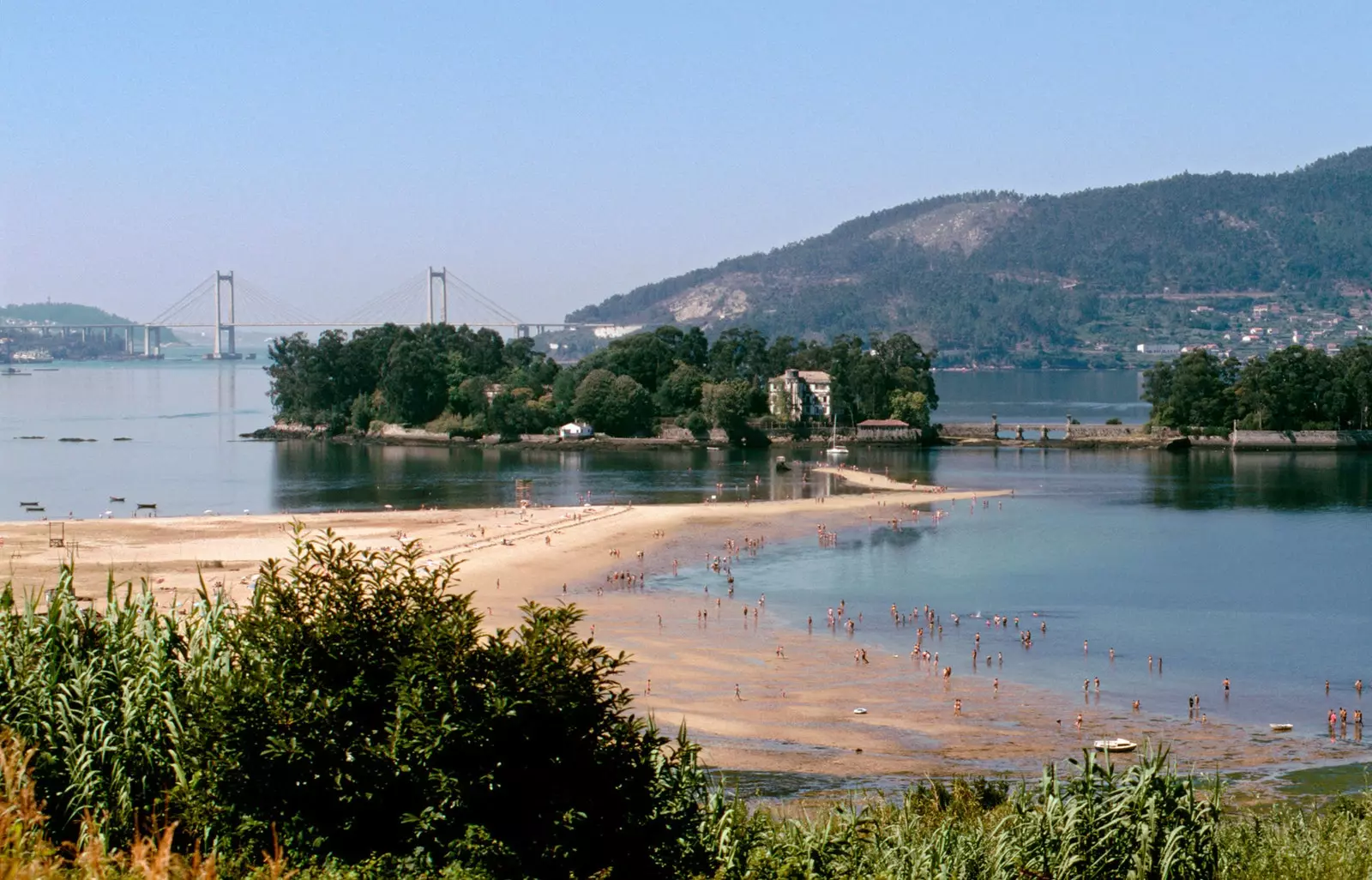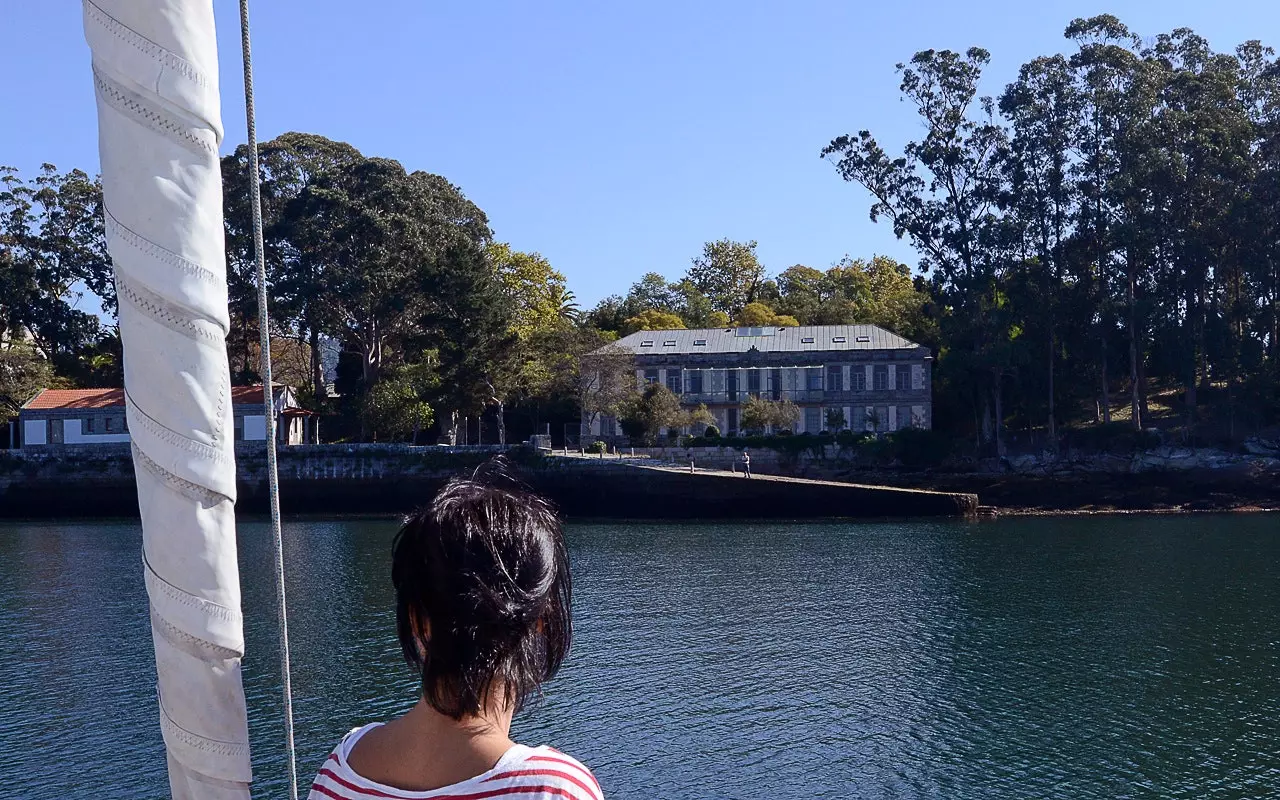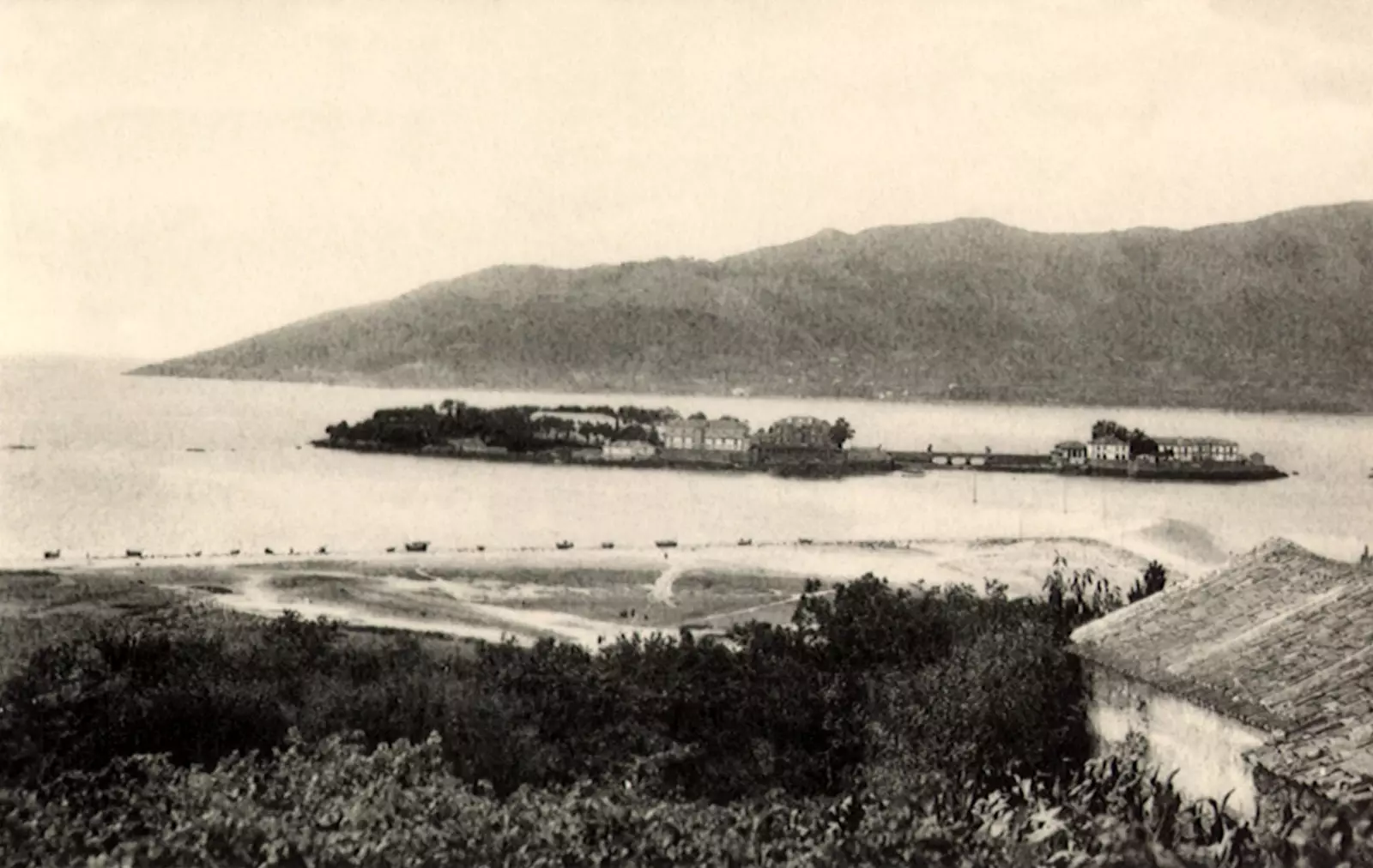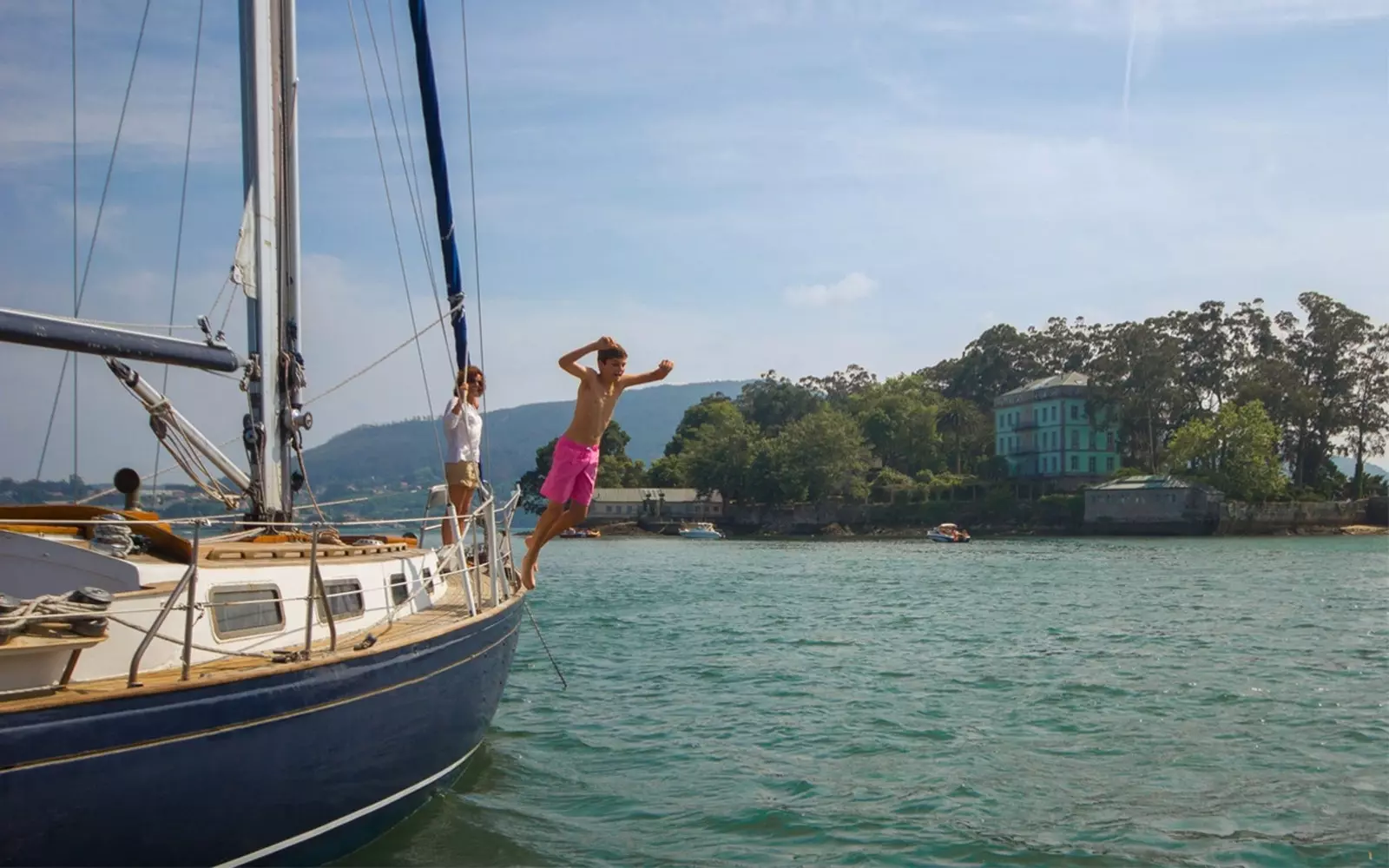
San Simón Island, in the Vigo estuary.
Monastic center, longing for pirates, location in Jules Verne's Twenty Thousand Leagues Under the Sea, lazaretto and leper colony, Francoist concentration camp, rest colony, orphanage. They are the thousand lives of the small archipelago of San Simón, in the Vigo estuary, that has moved in a constant dichotomy between the absolute fascination of an incomparable environment and the tragic fate that, at different historical moments, these islands have starred in. Today, renamed Illa do Pensamento, they seek to reconcile their past with a future marked by culture.
A first look at these two islands – San Simón, the largest, and San Antón – draw a wild place with a moving atmosphere that is condensed in the Paseo Os Buxos, a mall whose tree-lined dome is more than a century and a half old. Some more centuries ago, at the beginning of the Middle Ages, other trees observed the Templar walks that are the protagonists of the first records of these islands, when **it was a monastic center for various religious orders. **
Its isolated location, as well as its proximity to the important monastery of Poio, It made San Simón a favorite place for the monks but also a coveted booty for pirates. Here came the famous Sir Francis Drake, bloody pirate for the Spanish, brave hero and daring navigator for the English. Drake raided and pillaged the islands not once but twice causing the fire and destruction of the convent.
It took almost 20 years for the monks to decide to return again, restoring the devastated buildings. The austere chapel of San Simón is the oldest building that remains on the island, inside there is only an image of the saint who is missing both hands.

On the island of San Simón there is an interpretation center and an auditorium.
THE BATTLE AND THE TREASURE OF RANDE
Leaving behind the chapel of San Simón and at the end of the enigmatic Paseo Os Buxos is the Mirador da Boca da Ría with one of the most privileged views of the Vigo estuary, the place where one of the best-known battles in the area took place in 1702 and has lasted for centuries feeding legends both inside and outside Galicia: the battle of Rande, in the context of the War of the Spanish Succession.
In front of the archipelago, some 40 Spanish and French ships, loaded with the largest treasure from America, were attacked by almost fifty English and Dutch ships. In less than ten hours, the latter won, pillaging neighboring Redondela as well as the island of San Simón. As for the treasure, some versions maintain that there was time to unload it but, according to the legends, the Spanish preferred to sink the ships and send the precious cargoes to the bottom of the sea rather than surrender it.
These stories reached the very Jules Verne, who chose this sunken treasure as a source of supply of gold, silver and jewels for the Nautilus, the submarine of his Twenty Thousand Leagues Under the Sea. Such an honor was extolled with a statue of the writer in the port of Vigo and another of Captain Nemo himself that guards the arrival to San Simón, emerging from the waters accompanied by two divers, only visible when low tide allows it.
Some figures that arrived in this little paradise when this archipelago had its darkest moments to live, first as a leper colony or leper colony and later as a Francoist concentration camp.
THE BLACKEST HISTORY OF SAN SIMÓN
The best way to get closer to these disastrous memories of San Simón is by visiting Teruel Avenue and the current Interpretation Center. The latter was the old lazaretto, built at the beginning of the 19th century on the island of San Antón, dedicated to the infected and the sick without a cure. Plus, he got up too. the one that today is the auditorium, in San Simón, used for the quarantine of the navigators who wanted to enter the estuary, thus trying to prevent leprosy or cholera from reaching the port of Vigo. It was then that the three-arched bridge that currently joins the two islands was built. **
As for the Teruel avenue, it is the most serene way to delve into the past of San Simón as one of the most terrible concentration and extermination camps of the Franco regime. This ride around the island it was built by the republican prisoners incarcerated here. With the beginning of the war, the prisoners of the area were transferred to San Simón but, after the conflict ended, they began to arrive. inmates from other prisons in Spain, who were mostly crowded into the main building, the current Course Building. If the spirit allows it, a visit to the cemetery, where still a bullet is preserved in the wall memory of the executions, allows you to get an idea of the horror experienced here.

Image of San Simón Island in 1930
When the camp closed in 1943, it was dedicated for brief periods to a rest center for Franco's guard –who suffered a marine accident with 43 deaths and who are remembered by a stone cross located on one of the nearby islets– and to an orphanage for children of sailors. Later, San Simón fell into disuse and almost total abandonment for decades.

The San Simón Cove is known for the invasions of Francis Drake, the Battle of Rande or the presence of Nazi Germany around tungsten.
ILLA DO PENSAMENTO
Currently, after the restoration carried out by César Portela in 2003 for cultural use, the archipelago of San Simón has been renamed several times, most recently as Illa do Pensamento seeking “reflection, dialogue and culture”. The island is dotted with statues made by various artists, carefully integrated into the landscape, among which the one dedicated to the troubadours Meendinho, Martín Codax and Johán de Cangas stands out.
Also, at that time when the word coronavirus was only pronounced by virologists, this archipelago was the privileged environment that hosted the Sinsal, a festival with a clear diverse, sustainable and gender vocation. Not surprisingly, this natural space is now protected; on the one hand, as it is considered a Site of Cultural Interest, and on the other, as it belongs to a Special Protection Area of the Natura 2000 Network.
visit today San Simón has an overwhelming point in which, through each of its corners, its splendid and beautiful wild character is intermingled with an irremediable historical imprint.
